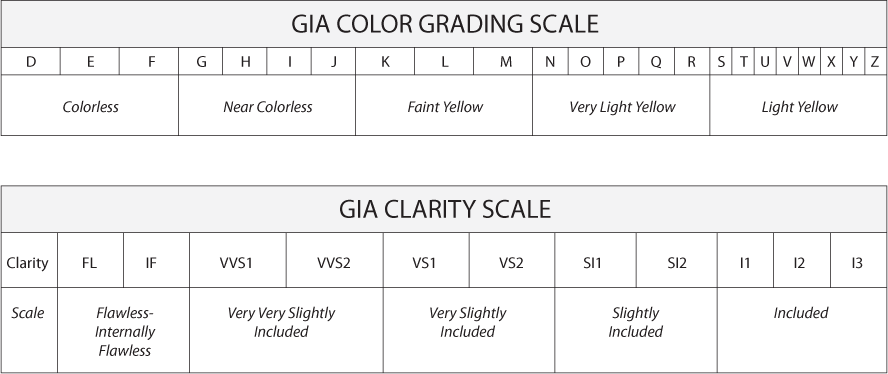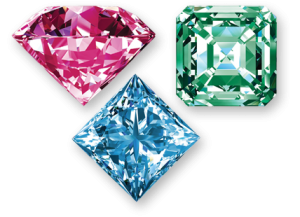GIA Color and Clarity Charts

Round Brilliant Facets

Colored Diamonds

BROWN DIAMONDS
Brown Diamonds are one of the newest gemstones to make the trend scene, portraying images of luxury and decadence with names like chocolate, champagne and cognac. They are one the most plentiful colored diamonds mined, accounting for roughly 80% of yield at the Argyle Mine in Australia. Their various hues of brown color are caused by internal parallel grain lines in the diamond.
YELLOW DIAMONDS
Yellow diamonds, being the second most abundant fancy-color diamond, contain trace elements of nitrogen. The color most desired is the highly-saturated yellow, sometimes referred to by their marketing term “canary.”
PINK DIAMONDS
The pink color ranges from soft, clear pink to a reddish purple. Pink diamonds get their color from graining inside the crystal. The more graining, the more color. Some of the finest pink diamonds can also be found in the Argyle Mine in Australia.
RED DIAMONDS
These stunners are the most rare of all diamonds, and do not occur in large carat sizes. The largest red diamond is 5.11 carats, whereas the largest white diamond is over 600 carats. Like pink diamonds, they also get their color from graining inside the crystal.
BLUE DIAMONDS
Also very rare and expensive, blue diamonds are caused by boron impurities in the crystal; the more boron, the deeper the hue. The most famous, and the largest blue diamond is the “Hope Diamond” weighing 45.52 carats. Blue diamonds range from a light sky-blue, or an intense ocean-color blue and usually contain traces of grey. They never reach the deep saturated color of blue sapphires.
GREEN DIAMONDS
When diamonds form near radioactive rocks, the presence of radiation causes them to be green. The green color is primarily at the surface, not through the entire stone. These rare diamonds are typically low in saturation, and somewhat grayish.

